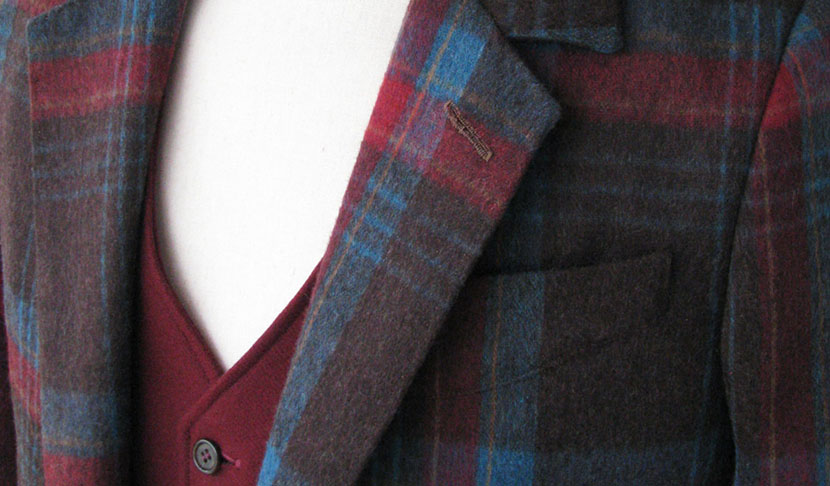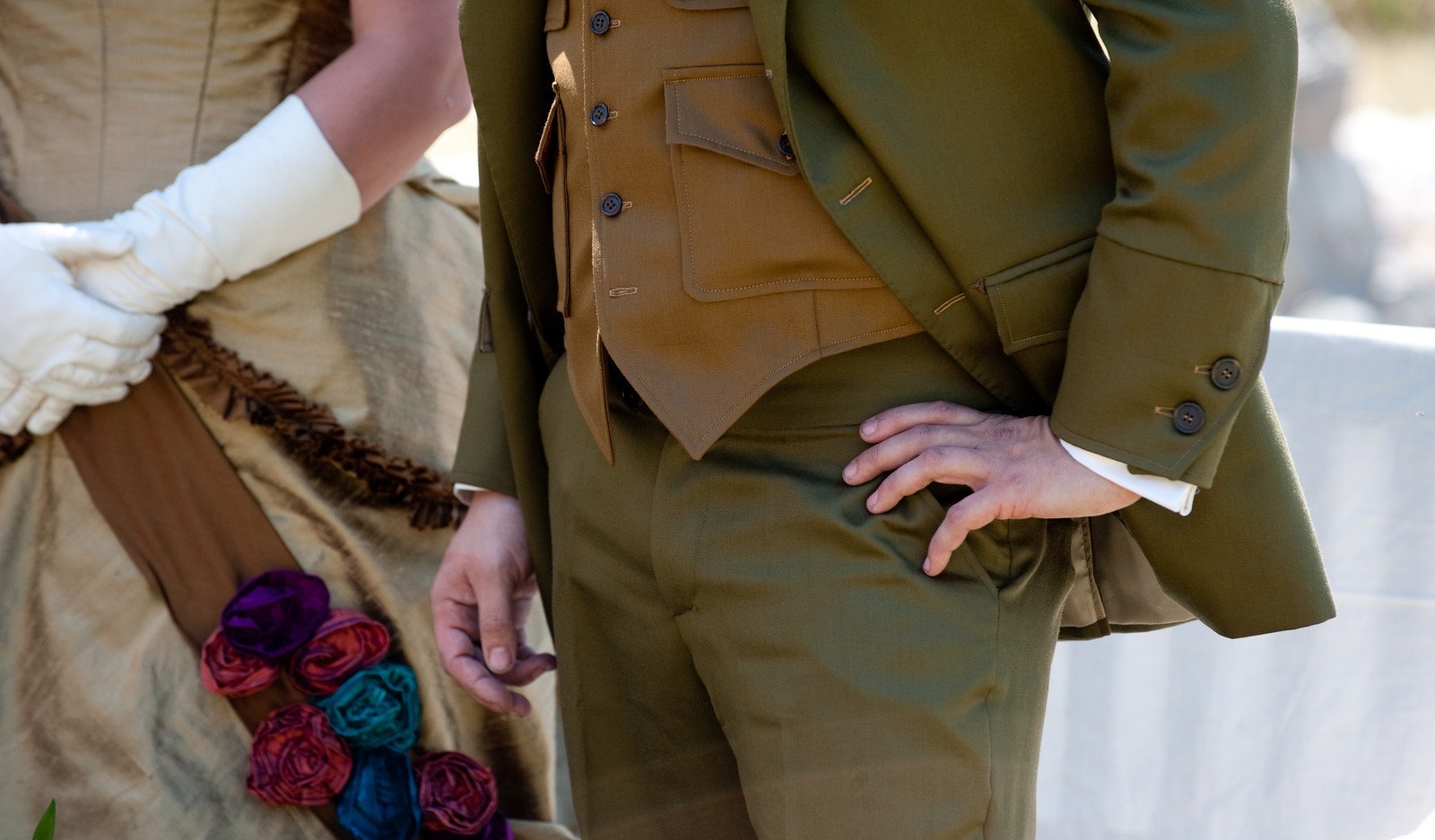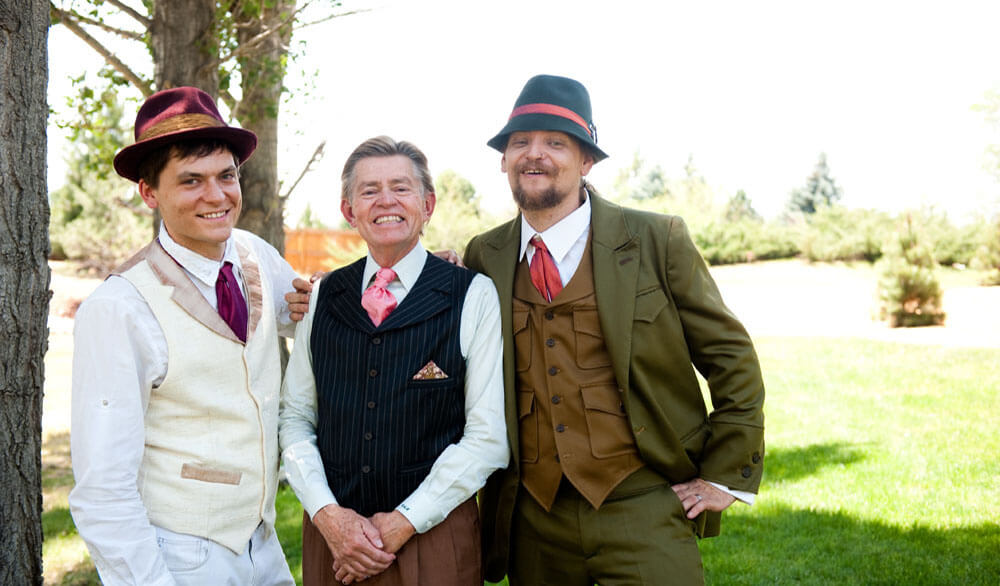We have always recognized as well that not everyone has the inclination, the time, or the budget to go through the full process and have developed various designs as Made-to-Measure styles. Here, you get the same Denver-made pieces, cut to your measurements, but based on time-proven and well loved designs from our heritage.
Tag Archives: bespoke suit
With bespoke clothing you are only limited by your imagination, the skill of your tailor, and the physical properties of the fabric. These pictures are of suits we made for clients who had a touch of the 1970s in their dreams-----bold mustards, safari details, wide lapels, corduroy, and fat cravats.
The traditional heritage tailored suit is almost entirely made from animal products----from the wool of the main fabric to the silk thread and detailing. The buttons are made from buffalo horn or shell and the interior canvas is made from goat hair.
In the United States, we tend to call the best business and formal looks and fits “European” or “Italian” or “British,”–sometimes for good reason, and sometimes merely as a shorthand for saying that a look is “good” or “exciting” or somehow intangibly different from the basic relaxed New England look that we are used to […]
I love traditional tailoring. But traditional tailoring can mean a lot of different things on different occasions. Clients often ask me, “What do you wear?” And my answer tends to be, “Well, I have a very interesting sort of job.” I meet with clients—where it is expected that I look as well dressed as possible. […]
We are famous for our 1920s style vests. The 1920s were a high point for waistcoats. The vests of the period contain all of the classic details that would become more codified in the 1930s. But in this earlier period there is still a wonderful flexibility and richness in style.
For daytime outdoor wear, plaid is supreme. Whether you are at a wedding, the museum, or just headed out for brunch with your friends, a plaid sport coat or vest is ideal. The look is much less uptight than an evening look in black, and much less of a purely “business” look than navy. Because […]
Every suit that we make is unique and made for an individual client. We don’t have 5 or 10 or even 500 designs. For every suit that we make, we start with the client and his own sense of style. We ask him where he will wear the piece. How often he will wear […]
Our completely custom line of suits–which are individually handmade to order right here in our studio in Denver, Colorado–often have a vintage flair to them. Philosophically, our suits hark back to what we consider to be the most interesting period for men’s dress—the period between 1907 and 1921–when many of the distinctive looks of modern […]
Waistcoats (or "vests" in good American English) haven't been this in style for decades. Perhaps the recession made us all a bit more serious, and many of the guys out there who hoped to be boys forever decided to grow up. Or perhaps we all just decided to think a bit more about history and a bit less about what was new, when future prospects seemed to dim.
- 1
- 2











